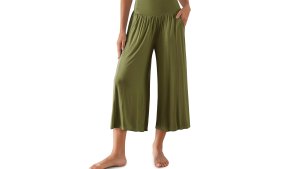Branded content. Us Weekly has affiliate partnerships so we may receive compensation for some links to products and services.
Ah, pimples: the on-your-face, can’t-be-missed visual manifestation of all the awkwardness and hormonal turbulence that is puberty. Except that it’s not just teenagers who battle with acne. Whether you’ve just hit high school or are pushing 30, breakouts can seriously undermine your self-confidence and general wellbeing. Anyone who has experienced acne knows that in addition to being a psychological challenge, it can also be physically painful and scarring.
According to the American Academy of Dermatology Association, approximately 50 million Americans struggle with acne annually, making it the most common skin condition in the country. While acne has traditionally been associated with puberty, adult acne, which affects up to 15% of women in the US, is on the rise.
Not only are an increasing number of people struggling with acne, but the condition is becoming harder to treat. Widespread use of oral and topical antibiotics to treat acne over the past four decades has led to an increase in the strains of the bacteria Propionibacterium acnes that are resistant (or less sensitive) to antibiotics traditionally used to treat the condition.
So, to recap: the number of people living with acne is increasing; acne isn’t restricted to those going through puberty; and the condition is becoming more difficult to treat.
Can a face wash make a difference?
The good news—and we could all do with some of that right about now—is that the options available for washing your face have increased dramatically over the past few decades. While the right facial cleanser might not be enough to get your acne under control, it is a good place to start.
Face washes formulated specifically to help clear and prevent acne tend to target one or more of the pathological pathways involved in the development of acne. Acne can develop as the result of numerous factors including:
- increased sebum production (think of sebum as the oil produced naturally by your body);
- abnormal follicular keratinization (when the cells in the hair follicle don’t shed normally onto the skin surface, causing a blockage in the hair follicle);
- bacteria, specifically, the proliferation of Propionibacterium acnes; and
- inflammation.
To address one or more of these concerns, face washes formulated to tackle acne often include one of two active ingredients: salicylic acid or benzoyl peroxide.
Salicylic acid, which can be found naturally in willow bark, wintergreen, and sweet birch, acts as a chemical exfoliant. Because of its chemical structure, it can penetrate the epidermis and dissolve the build-up of dead skin cells and oils. This quality makes salicylic acid particularly useful in fighting whiteheads and blackheads. In low concentrations, salicylic acid also has anti-inflammatory properties, which can be beneficial to inflamed, acne-prone skin.
If you have cystic acne—characterized by hard, painful cysts below the skin’s surface—a product containing benzoyl peroxide may be a better bet. In addition to providing a light exfoliation to rid your skin of dead cells and excess oil, benzoyl peroxide has antibacterial properties that make it particularly effective in getting rid of acne-causing bacteria.
Other key ingredients often found in the best acne face washes include tea tree oil (broad antifungal and antibacterial properties), nicotinamide (helps to reduce inflammation), and sulfur (antifungal and antibacterial properties, plus removes excess sebum and dead skin cells from pores).
Of course, if you are already being treated for acne with a prescription medication or if other products in your skincare routine contain salicylic acid or benzoyl peroxide, you might want to opt for a cleanser that doesn’t contain these active ingredients. In the same way that you don’t want to scrub at inflamed skin, you also don’t want to bombard it with too many active ingredients as this may result in irritation.
If your acne is already being treated by a dermatologist or if you are using a serum or moisturizer with active ingredients, the best acne face wash for you might be a gentle cleanser that rids your face of excess oil and dirt without stripping it of moisture or worsening inflammation.
Every skincare journey is different and there is no one-size-fits-all acne treatment. Bearing this in mind, our round-up of the best face washes for acne in 2023 includes cleansers for a range of budgets, both with and without active ingredients. Remember that it will probably take some time before you start noticing results and you may need to try out a few products before you find the one that works well for you.
1. Blu Atlas Volcanic Ash Face Cleanser

Packed full (98%) of ingredients derived naturally from plants, fruits, and minerals, this face wash tops our list of the best face washes for acne because of its versatility. Free of artificial fragrances, parabens, phthalate, and sulfate, this pH-balancing cleanser is gentle enough to be used on any skin type, regardless of age.
In an online review of the product, 40-year-old Crystal admits that she bought the Blu Atlas Volcanic Ash Face Cleanser for her teenage son, but started using—and loving—it herself after seeing the effect that it had on her son’s skin:
“I purchased this for my 15-year-old son who has the oh-so-wonderful teenage acne. I was shocked that within the first week his skin was already looking better—a lot of the bright redness, inflammation, and bigger acne had cleared up. Now, after a month, his skin looks amazing.”
How does this product, which contains neither salicylic acid nor benzoyl peroxide, work so well on acne-prone skin? It comes down to three key ingredients: volcanic ash (bentonite), lactobacillus ferment filtrate, and pomegranate seed oil. The mildly exfoliating volcanic ash removes excess oil and impurities from your skin, the lactobacillus ferment filtrate is deeply soothing, and the pomegranate seed oil helps reduce inflammation. All in all, it’s a powerful combo!
2. La Roche-Posay Effaclar Medicated Gel Cleanser

If you are looking for a targeted acne-fighting face wash, this medicated cleanser from La Roche-Posay ticks all the boxes. The non-comedogenic formula uses 2% salicylic acid and 0.05% lipo-hydroxy acid (a derivative of salicylic acid) to unclog pores and get rid of excess oil. Clinical tests have demonstrated that the cleanser is capable of reducing excess surface oil by up to 47%.
If you have particularly oily skin, that might sound great; but what about those with sensitive skin? Ingredients such as salicylic acid can quickly dry out or aggravate sensitive skin. However, thanks to the inclusion of glycerin, which draws in and retains moisture, this face wash is gentle enough for use on sensitive skin too.
La Roche-Posay posits that this cleanser can address a variety of skin concerns including angry red pimples, blackheads, whiteheads, oily skin, enlarged pores, and uneven skin tone. The fact that 77% of the more than 13,400 buyers on Amazon have given this product a five-star rating suggests that it does just that.
3. SkinCeuticals Purifying Cleanser: Out of stock

The star ingredient in this gel-to-foam cleanser from SkinCeuticals is glycolic acid. Derived from sugarcane, this alpha hydroxy acid is vaunted for its ability to provide an even exfoliation and tackle various skin concerns such as blemishes, dullness, uneven texture and tone, and signs of aging. In addition to glycolic acid, the SkinCeuticals Purifying Cleanser uses mild sulfate-free surfactants to remove dirt and excess oil.
Suitable for all skin types—including aging skin—this pH-balanced cleanser refreshes your skin without disrupting the protective skin barrier. The inclusion of glycerin in the formula ensures that your skin stays hydrated.
4. Neutrogena Oil-Free Salicylic Acid Acne-Fighting Face Wash

This affordable face wash from Neutrogena is proof that skin-care products don’t need to be expensive to be effective. Frequently recommended by dermatologists, this non-comedogenic gel cleanser has been on the market for many years and is still a firm favorite.
While the hero ingredient here is salicylic acid, it is Neutrogena’s MicroClear® technology that allows the beta-hydroxy acid to penetrate deep into the pores to remove the build-up of oil and dead skin cells. This microgel complex, which combines salicylic acid with sebum dissolvers, has been shown in clinical studies to reduce non-inflammatory and inflammatory lesions and help prevent the development of new acne lesions.
While this product generally receives positive reviews online, some users have complained that with regular use their skin feels unpleasantly dry. Those with sensitive skin may also find the dyes and fragrances in this formula to be irritating.
5. EltaMD Foaming Facial Cleanser

This pH-balanced cleanser from EltaMD uses a blend of gentle enzymes and amino acids to remove impurities from the skin. The key ingredient here is bromelain, an exfoliating enzyme found in pineapples that has anti-inflammatory properties. As acne is an inflammatory condition, any anti-inflammatory action is going to be helpful.
As the name suggests, this is a foaming cleanser and the cleansing action happens in the foaming phase. Massage the cleanser thoroughly into damp skin and then allow 30 seconds for the cleanser to foam up. Once it is all foamy, you can rinse it—and those impurities—off with warm water. Describing the sensory experience of using this cleanser, one online reviewer wrote:
“I love this cleanser! I had a lot of acne as a teen so my dermatologist suggested that I try this cleanser. I’ve never had a foaming cleanser like this…the only way to describe the foam is soft and squishy. It’s a super relaxing texture. Non-irritating and it doesn’t leave my skin feeling tight. I still feel hydrated after cleansing unlike when I’m using other cleansers.”
If there is one criticism of this cleanser that appears regularly in online reviews, it is that it has a distinctive added fragrance that some users find too strong or irritating.
6. PanOxyl Acne Foaming Wash With 10% Benzoyl Peroxide

PanOxyl Acne Foaming Wash, which contains the highest concentration of benzoyl peroxide available without a prescription, promises to kill over 99% of acne-causing bacteria after 15 seconds of being on your skin. It’s a pretty straightforward equation: less acne-causing bacteria means fewer acne lesions and fewer new breakouts.
This formula is particularly effective for those with cystic acne. However, despite the addition of moisturizing ingredients, the high concentration of benzoyl peroxide in this product might lead to sensitivity and dryness in those with more sensitive skin.
While this face wash might not be the solution for everyone struggling with acne, it certainly works for many people. Occupying the #1 Best Seller spot in the Amazon category of “facial cleansing washes,” PanOxyl Acne Foaming Wash With 10% Benzoyl Peroxide has an average rating of 4.5 stars from more than 44,500 reviews!
7. Vichy Normaderm PhytoAction Daily Deep Cleansing Gel

This gel-to-foam cleanser from Vichy contains a 0.5% concentration of salicylic acid to reduce blemishes and help prevent new breakouts. In addition to this, the formula includes zinc to reduce excess oil, copper to help renew the skin’s surface, and Vichy Volcanic Water to strengthen the skin barrier.
As the name suggests, Vichy Volcanic Water has its origins in French volcanoes and is enriched with 15 essential minerals that have been clinically proven to provide the skin with some protection against environmental stressors such as pollution.
In clinical tests, individuals who used this cleanser daily found that after four weeks: pores seemed less visible (83%), imperfections looked reduced (85%), skin tone appeared more even (89%), and skin looked smoother (98%). Amazing!
8. CeraVe Renewing Salicylic Acid Cleanser

Another affordable cleanser frequently recommended by dermatologists, CeraVe’s Renewing Salicylic Acid Cleanser can be used on both acne-prone and sensitive skin. In an online review, one convertee wrote:
“I’ve been using this product on my face for months now and my skin has never been more clear. My girlfriend recommended it to me and I will never go back! It doesn’t dry out my skin or make me red. Perfect for anyone with sensitive skin.”
If you have normal skin, you can use this as a daily cleanser, but if you have sensitive skin, it might be better to use this once or twice a week as an exfoliator. In addition to the exfoliating salicylic acid, this gel-to-foam cleanser also contains ceramides, hyaluronic acid, and niacinamide.
Ceramides, which are naturally found in your skin, play an important role in maintaining your skin barrier so that it can keep moisture in and impurities out. This cleanser is formulated with three essential ceramides (1, 3, and 6-II) to help reinforce your skin barrier. Hyaluronic acid helps your skin to retain moisture and niacinamide has a calming effect on your skin, which is great for those with inflammation. This simple, but effective product is fragrance free and non-comedogenic, which means that it won’t clog up your pores.
9. Humane Acne Face Wash

If you are looking for a product that is vegan and cruelty-free, try this acne wash from Humane. This cleanser has a relatively short ingredients list—only seven items on there, with one of them being water—that is free of parabens, phthalates, sulfates (SLS and SLES), paraffin, formaldehyde, mineral oil, synthetic fragrances, petrolatum, DEA, triclosan, and GMOs. This minimalist list of ingredients does include a 10% concentration of zit-zapping benzoyl peroxide.
“When I first brought this wash, I was skeptical, but desperate for something that would work,” admits a user called Alexis in an online review. “After just one wash I could see a difference and now, a year later, I’ll never buy another face wash again. This is perfect for my skin, which is oily and I had major acne when I first started using this. I cannot recommend this enough!”
For best results, the brand recommends massaging the face wash into your skin and allowing it to sit for a minute before washing it off. As your tolerance grows, you can gradually increase this to two to three minutes. It is common for products containing benzoyl peroxide to initially cause additional breakouts or redness, so don’t be alarmed if your acne seems to worsen initially.
If you find that the product is too strong—excessive flaking or peeling—then you can reduce the frequency of use or the amount of time that the product sits on your skin. Humane also has a milder version of this face wash that contains a 5% concentration of benzoyl peroxide and this might be a better option if you have sensitive skin.
10. REN ClearCalm Clarifying Clay Cleanser

If a clear conscience is one of your selection criteria, the ClearCalm Clarifying Clay Cleanser from REN might be what you’re looking for: vegan, cruelty-free, and packed in recycled plastic.
Unlike the other cleansers on this list, this cleanser uses French kaolin clay to draw out impurities and excess oil. Willow bark extract provides a light exfoliation, while zinc gluconate helps to reduce sebum production and reduces inflammation.
The formula also includes mayblossom extract, which contains flavonoids that tone the skin and reduce the appearance of enlarged pores. Meanwhile, a blend of essential oils—chamomile, lavender, and sage—calms and soothes your skin.
You can use this product as you would a regular cleanser or you can use it as a mask by applying a thin layer of the product to cleansed skin and letting it sit on your skin for 10 minutes before adding water, massaging into your skin, and rinsing. Because the ingredients are gentle and non-drying, this is a great option if you are prone to breakouts but have sensitive skin.
11. Dermalogica Acne Clearing Skin Wash

When it comes to skin-care products, Dermalogica is always a safe bet and this foaming acne cleanser is no exception. Encapsulated salicylic acid (0.5%) and phytic acid provide a gentle chemical exfoliation, effectively clearing clogged pores. In addition to treating acne and preventing blackheads, phytic acid (an alpha-hydroxy acid) has been shown to reduce inflammation, even out skin tone, and stimulate collagen production.
Plant-derived glycerin ensures that your skin doesn’t feel too dry and a blend of menthol, camphor, tea tree, and chamomile flower extract cools and calms inflamed skin. This cruelty-free product is also free of all the nasty stuff (parabens, formaldehydes, phthalates, mineral oil, sulfates, and triclosan). That means you can lather it on daily without worrying about how you might be damaging your skin or the environment.
Frequently asked questions
Are there any downsides to benzoyl peroxide?
Benzoyl peroxide has been used to treat acne since the 1930s, and it is still the most effective active ingredient available without a prescription. However, it can aggravate sensitive skin resulting in dryness, erythema (simply put: redness), and scaling. A very small percentage of the population may also experience allergic contact dermatitis, which presents as an itchy rash.
The risk of sensitivity is related to the strength of the concentration of benzoyl peroxide. Over-the-counter products—those without a prescription—can contain a benzoyl peroxide concentration of up to 10%. However, a higher concentration does not automatically mean increased efficacy. If you have dry or sensitive skin, it is much better to use a product with a lower concentration of benzoyl peroxide to reduce the risk of irritation.
Benzoyl peroxide is a bleaching agent, so make sure that you wash the product off completely before drying your face (or you might end up with bleached towels!) and be careful not to get the product on your clothes or in your hair.
How much salicylic acid should my face wash contain?
While chemical peels—those administered by a dermatologist—can contain a concentration of salicylic acid of up to 50%, over-the-counter products such as facial cleansers contain concentrations of between 0.5% and 2%.
However, if you have sensitive or very dry skin, even low concentrations of salicylic acid can irritate or overly dry-out your skin. When starting to use a new product containing salicylic acid, it is a good idea to begin on alternate days and build up to more regular use based on your tolerance.
Why is the pH-level important in a cleanser?
Okay, we’re going to get a little sciency here. You probably already know that pH (that stands for potential hydrogen) is used to measure the acidity of a substance. Acidity is measured using a scale from 1 to 14. A pH level of 7 is considered neutral; anything below this is acidic and anything above this is alkaline (or non-acidic). Your skin is naturally acidic and should have a pH value of between 5.3 and 5.9.
Skin with a higher pH level—a more alkaline profile—tends to be dryer and more sensitive. A higher pH level also facilitates microbial growth, which makes the development of acne more likely. Cleansing your face with a product that has a high pH level (one that differs from that of your skin) can temporarily (for up to eight hours) increase the pH level of your skin and exacerbate acne. Opt for a cleanser with a slightly acidic pH level.
What are hydroxy acids?
Hydroxy acids, which are often used in skin-care products, can be divided into two groups: alpha-hydroxy acids (AHAs) and beta-hydroxy acids (BHAs). While both AHAs and BHAs provide exfoliating benefits, they have slightly different chemical structures, which changes how they interact with your skin.
Alpha-hydroxy acids—such as glycolic acid and lactic acid—are water-soluble and can penetrate the dermis. Beta-hydroxy acids—such as salicylic acid—are lipid-soluble and can penetrate the epidermis. Salicylic acid, for example, works at a deeper level to break apart the attachments between cells in the skin and unclog the pores, while AHAs operate on a more superficial level to smooth the skin and reduce hyperpigmentation.
What’s the deal with sulfates, parabens, and phthalate?
Trying to figure out which products to use can be complicated, not only because there are so many products out there, but also because ingredient lists tend to be long and confusing. When choosing a face wash, it helps to know what to look out for. For example, if you are looking for a cleanser to help with acne, checking for salicylic acid or benzoyl peroxide can narrow down the list. However, there are also some ingredients that you should try to avoid, and sulfates, parabens, and phthalate fall into this category.
Why? Because, while they can be effective (the reason that cosmetic companies started using them in the first place), they generally aren’t that good for your health or the environment.
Sulfates, such as sodium laureth sulfate and sodium lauryl sulfate, are powerful surfactants (cleaning agents), but in the process of cleaning your skin, they can strip your skin of beneficial oils and moisture. Parabens are used to prevent bacteria growth in skin care products, but they can cause skin irritation. And phthalate, a petroleum-based chemical that is used to prolong the fragrance of a product, has been linked to more serious liver, thyroid, and immune system damage.
This post is brought to you by Us Weekly’s Shop With Us team. The Shop With Us team aims to highlight products and services our readers might find interesting and useful, such as wedding-guest outfits, purses, plus-size swimsuits, women’s sneakers, bridal shapewear, and perfect gift ideas for everyone in your life. Product and service selection, however, is in no way intended to constitute an endorsement by either Us Weekly or of any celebrity mentioned in the post.
The Shop With Us team may receive products free of charge from manufacturers to test. In addition, Us Weekly receives compensation from the manufacturer of the products we write about when you click on a link and then purchase the product featured in an article. This does not drive our decision as to whether or not a product or service is featured or recommended. Shop With Us operates independently from the advertising sales team. We welcome your feedback at [email protected]. Happy shopping!












